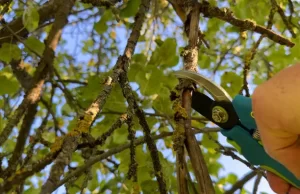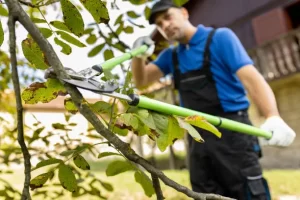Trimming an oak tree is essential for its health, structure, and overall appearance. However, the timing of your trimming efforts is crucial to ensure the tree’s optimal growth and minimize stress. Knowing the best time of year to trim an oak tree can help you achieve better results and maintain a healthy landscape.
Why Timing is Important?
The timing of oak tree trimming affects various aspects of the tree’s health and growth:
- Disease Prevention: Trimming at the right time can reduce the risk of disease and pest infestations.
- Growth Management: Proper timing helps manage the tree’s growth and structure, promoting a strong and balanced canopy.
- Aesthetics: Trimming during the optimal season ensures that the tree maintains a desirable shape and appearance.
Understanding when to trim your oak tree is vital for achieving these benefits and ensuring the tree remains healthy and attractive.
Best Time to Trim Oak Trees
The ideal time to trim oak trees generally falls within specific seasons. Here’s a detailed look at the best times to trim an oak tree:
1. Late Winter to Early Spring
- Timing: Late winter to early spring, typically between February and March, is considered the best time for trimming oak trees.
- Why: During this period, the oak tree is still in its dormant phase. Trimming while the tree is dormant minimizes stress and promotes quicker recovery as the growing season begins. Additionally, this timing reduces the risk of oak wilt, a serious fungal disease that affects oak trees.
2. Summer Trimming
- Timing: In some cases, light trimming or removing dead branches can be done during the summer, from June to August.
- Why: Summer trimming can help address specific issues like removing hazardous branches or correcting the tree’s shape. However, major trimming should be avoided during this period to prevent excessive stress on the tree.

When to Avoid Trimming?
While there are ideal times for trimming, there are also times when it’s best to avoid it:
1. Late Summer to Fall
- Timing: Avoid trimming oak trees during late summer to fall, typically from September through November.
- Why: Trimming during this period can expose the tree to diseases and pests, especially as the tree prepares for winter. Additionally, excessive trimming can stress the tree and hinder its ability to prepare for the colder months.
2. During Severe Weather
- Timing: Do not trim your oak tree during or immediately after severe weather events.
- Why: High winds, heavy rains, or extreme temperatures can affect the tree’s stability and health. Wait until conditions improve before performing any trimming.
Tips for Trimming Oak Trees
Proper technique is crucial for maintaining the health and aesthetics of your oak tree. Here are some tips to ensure effective trimming:
- Use Sharp Tools: Ensure your pruning shears or saws are sharp to make clean cuts. Dull tools can damage the tree and create entry points for diseases.
- Avoid Topping: Do not excessively cut the top of the tree, as this can lead to weak growth and poor tree structure.
- Prune for Health: Focus on removing dead, diseased, or crossing branches to improve the tree’s health and structure.

Consulting a Professional
Trimming oak trees can be complex, particularly for large trees or those with specific health concerns. Consulting a professional arborist ensures that the job is done safely and effectively.
- Expertise: Arborists have the knowledge and experience to assess the tree’s health and recommend the best trimming practices.
- Safety: Professionals use specialized equipment and techniques to handle large trees and hazardous branches safely.
- Health: Proper trimming by an expert helps prevent disease and promotes healthy growth.
For expert advice and services, consider contacting Bieniek Tree Services. Our team of professionals can help you with all your tree care needs, ensuring that your oak trees remain healthy and beautiful.
Preventative Measures
To maintain the health of your oak trees and reduce the need for extensive trimming, consider these preventative measures:
- Regular Inspections: Periodically check your oak trees for signs of disease, pests, and structural issues.
- Proper Watering and Fertilization: Ensure your trees receive adequate water and nutrients to support healthy growth.
- Pest Management: Address any pest issues promptly to prevent damage that may require trimming.
Conclusion
Understanding the best time of year to trim an oak tree is essential for maintaining its health, aesthetics, and overall structure. By following the recommended timing and techniques, you can ensure that your oak tree thrives and enhances your landscape. For professional tree trimming and care, consider contacting Bieniek Tree Services. Our team of experts is here to assist you with all your tree care needs, ensuring a safe and beautiful landscape.
